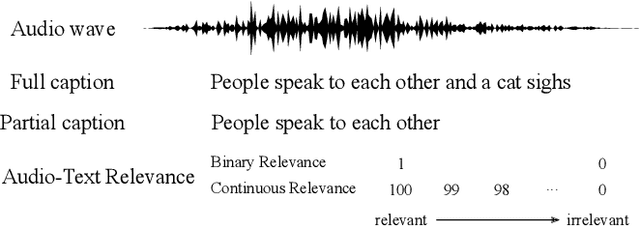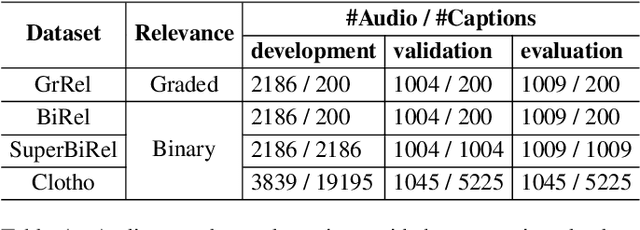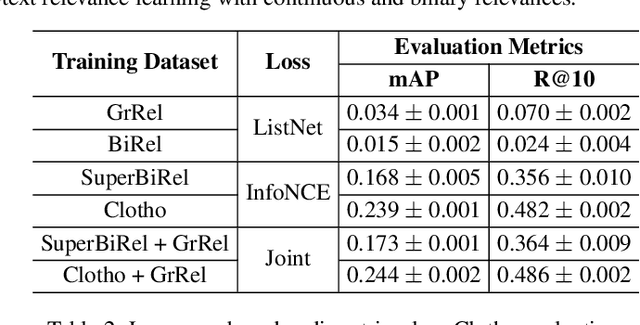Integrating Continuous and Binary Relevances in Audio-Text Relevance Learning
Paper and Code
Aug 27, 2024



Audio-text relevance learning refers to learning the shared semantic properties of audio samples and textual descriptions. The standard approach uses binary relevances derived from pairs of audio samples and their human-provided captions, categorizing each pair as either positive or negative. This may result in suboptimal systems due to varying levels of relevance between audio samples and captions. In contrast, a recent study used human-assigned relevance ratings, i.e., continuous relevances, for these pairs but did not obtain performance gains in audio-text relevance learning. This work introduces a relevance learning method that utilizes both human-assigned continuous relevance ratings and binary relevances using a combination of a listwise ranking objective and a contrastive learning objective. Experimental results demonstrate the effectiveness of the proposed method, showing improvements in language-based audio retrieval, a downstream task in audio-text relevance learning. In addition, we analyze how properties of the captions or audio clips contribute to the continuous audio-text relevances provided by humans or learned by the machine.
 Add to Chrome
Add to Chrome Add to Firefox
Add to Firefox Add to Edge
Add to Edge